Installing cork flooring is easy, whether you are installing cork tiles or panels. Carefully read about cork flooring installing guidelines with each manufacturer you consider to catch the subtleties that may exist.

There may be issues around installing cork floors in bathrooms, on radiant floors, and in dry climates. Installing cork flooring tiles requires glue while installing floating cork flooring doesn’t so that the floor can move freely — float — across the floor with expansion and contraction.
The natural characteristics of cork means that when installing cork flooring, the variations in shade and pattern that make cork so unique and beautiful must be taken into account. Cork tiles should be shuffled prior to installation to ensure a more evenly balanced coloring on the floor.
The tendency of cork to expand and contract with humidity changes can be minimized by installing floating cork flooring, and by stabilizing the temperature and humidity in your house. Even so, installing cork floors in bathrooms or other areas with high moisture content should be avoided. However, if your choose to install cork flooring in a bathroom, the perimeter of the room should be caulked prior to installing the baseboards to avoid moisture penetration (or you can calk around the baseboards for the same reason).
To further minimize the impact of variables in the climate, the cork flooring must acclimate for 3-4 days prior to installation. To do this, simply remove the cork tile from its packaging and leave in the room where the floor will be installed. The room temperature should be between 60F and 70F with normal levels of humidity. If you live in a particularly dry climate, let the cork acclimate for several weeks to make sure it has dried and contracted as much as it’s likely to so that you don’t get shrinkage once it’s installed.
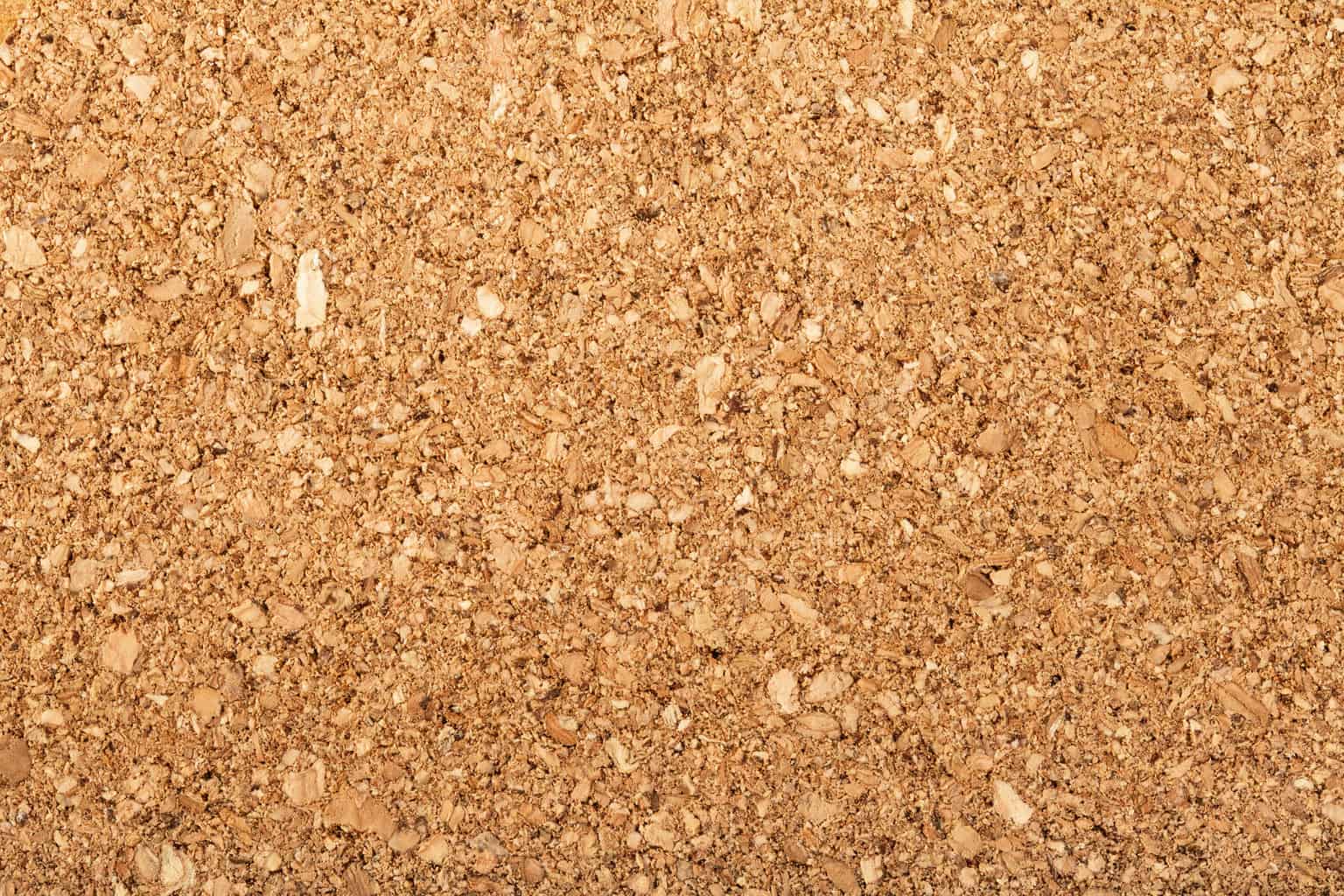
Installation Process For Cork Flooring
Prepare the Subfloor
Generally, cork can be installed over any sub-floor as long as it is smooth, level, clean, and dry. That means that any old paint, wax, grease, polish, and old adhesive must be removed to ensure a good bond.
- For installation over existing wood floors, scrub with tri-sodium phosphate after using a paint or varnish remover. In extreme cases, the floor should be sanded, and then washed, rinsed, and allowed to dry.
- For concrete sub-flooring, make sure the concrete is level using a latex fill or leveler. Then the cement should be primed using a concreted primer or for higher-moisture rooms, covered with polyethylene sheets as a moisture barrier.
- To install on existing vinyl or other smooth surfaces, ensure the old floor is in good condition and rough up the smooth surface to ensure a good adhesive bond.
- Cork floors do not seem to adversely affect radiant-heat systems as long as a “vapor barrier” is laid down between the sub-floor and the cork. However, check with the manufacturer to ensure compatibility and for recommendations for maintenance.
Lay the Tile
Once the sub-floor is ready, layout your cork tiles, making sure that the color and pattern variations are scattered throughout your room. Before applying your water-based contact cement adhesive to the perimeter of the room using a paint brush, chalk your lines onto the sub-floor. Then, using a paint roller to apply the adhesive to the rest of the floor, paint directly over the chalk lines because the adhesive will dry clear. Allow to completely dry for about an hour until tacky before laying the cork tile.
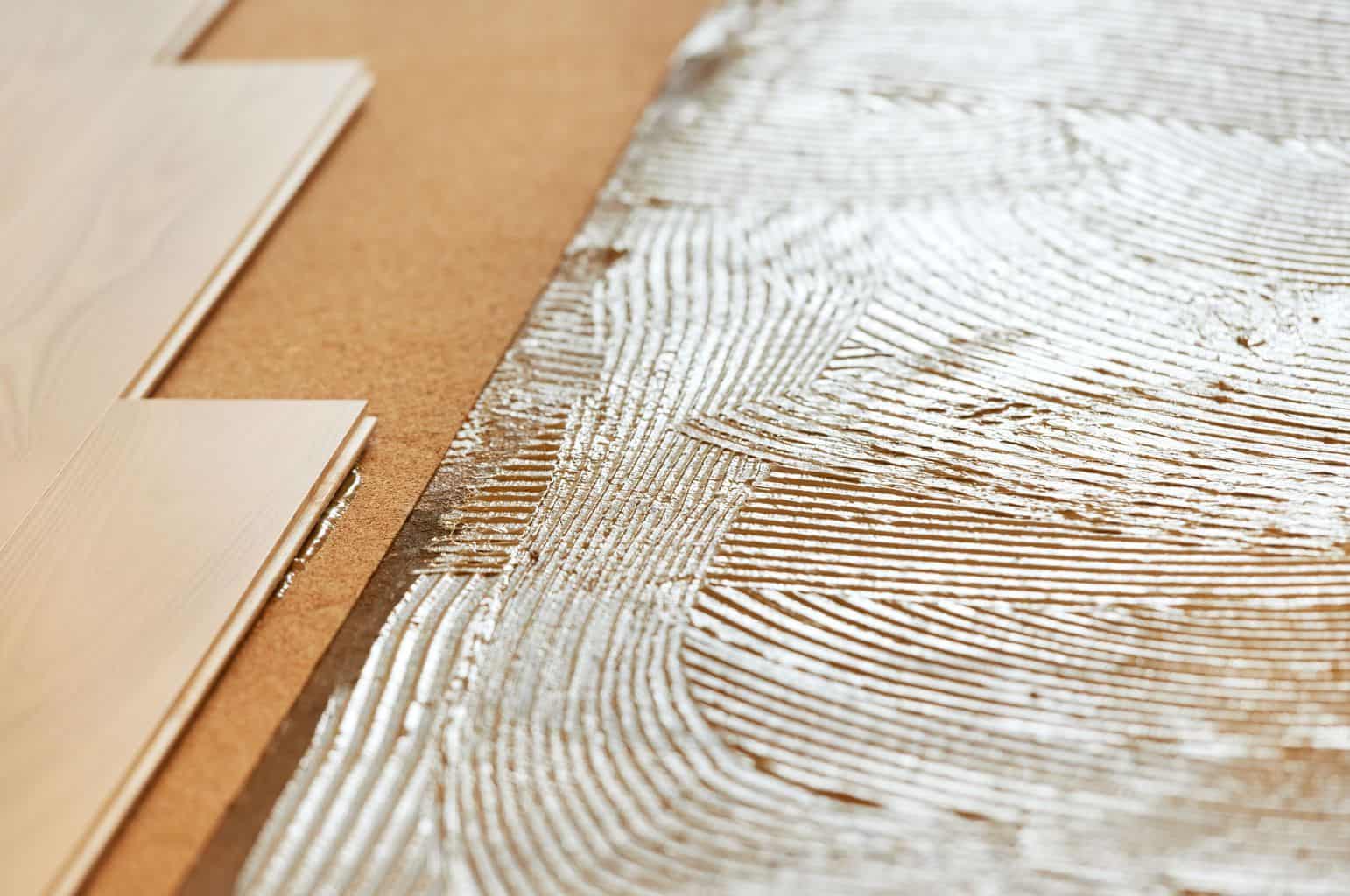
Starting in one corner, align the first tile to the chalk line and the next tile tight to the edge of the first. The remaining tiles can be laid in the same fashion and if necessary, can be cut using a sharp utility or linoleum knife. To attain a positive contact between the tile and sub-floor, the tiles must be hit with a mallet or rolled with a standard tile roller four times in each direction.
Finishing
Before applying a top coat of urethane or flooring wax to your tiled floor, remove any excess adhesive from the floor using a damp cloth, if the adhesive is wet, and mineral spirits if the adhesive is dry. Plus, the tiles and seams should be vacuumed and then cleaned with a sponge. Since many of the cork tiles already have finish on them when sold, this final top coat helps protect the adhesive from moisture working its way through the seams.

If you opt to install a floating floor, be sure to leave a 1/4-1/2 inch gap around the edges of the room, giving room for expansion when temperatures and humidity rise. Some cork floor companies expect you to put an expansion joint at each room change, not just at doorways; be sure to ask before you make your cork purchase what your cork floor company’s policy is. Another interesting note is that you see maximum lengths of how much floating cork you lay before inserting an expansion joint; generally that number is much lower than is really necessary.
The video below shows a step-by-step process for cork floor installation.
Let the finish dry for four hours before walking on the floor with socks and 24 hours before walking on the floor with shoes. Your installation is complete.
If you’re looking for an ecologically friendly flooring option that fits within your budget, cork flooring may be the ideal solution for you! Cork floor is a hardy and sensible flooring option that is easy to maintain and a beautiful alternative to traditional hardwoods.
The earthy style cork flooring brings to a room creates a cozy ambiance and this comfortable flooring option is quickly becoming a favorite in kitchens, living rooms and basements.
These days, manufacturers have designed cork flooring planks similar to laminate flooring, with a tongue and groove type design, eliminating the need for glue or nails. This makes installing cork flooring a fairly simple process that can be accomplished in a reasonable amount of time by even a novice DIY-er.
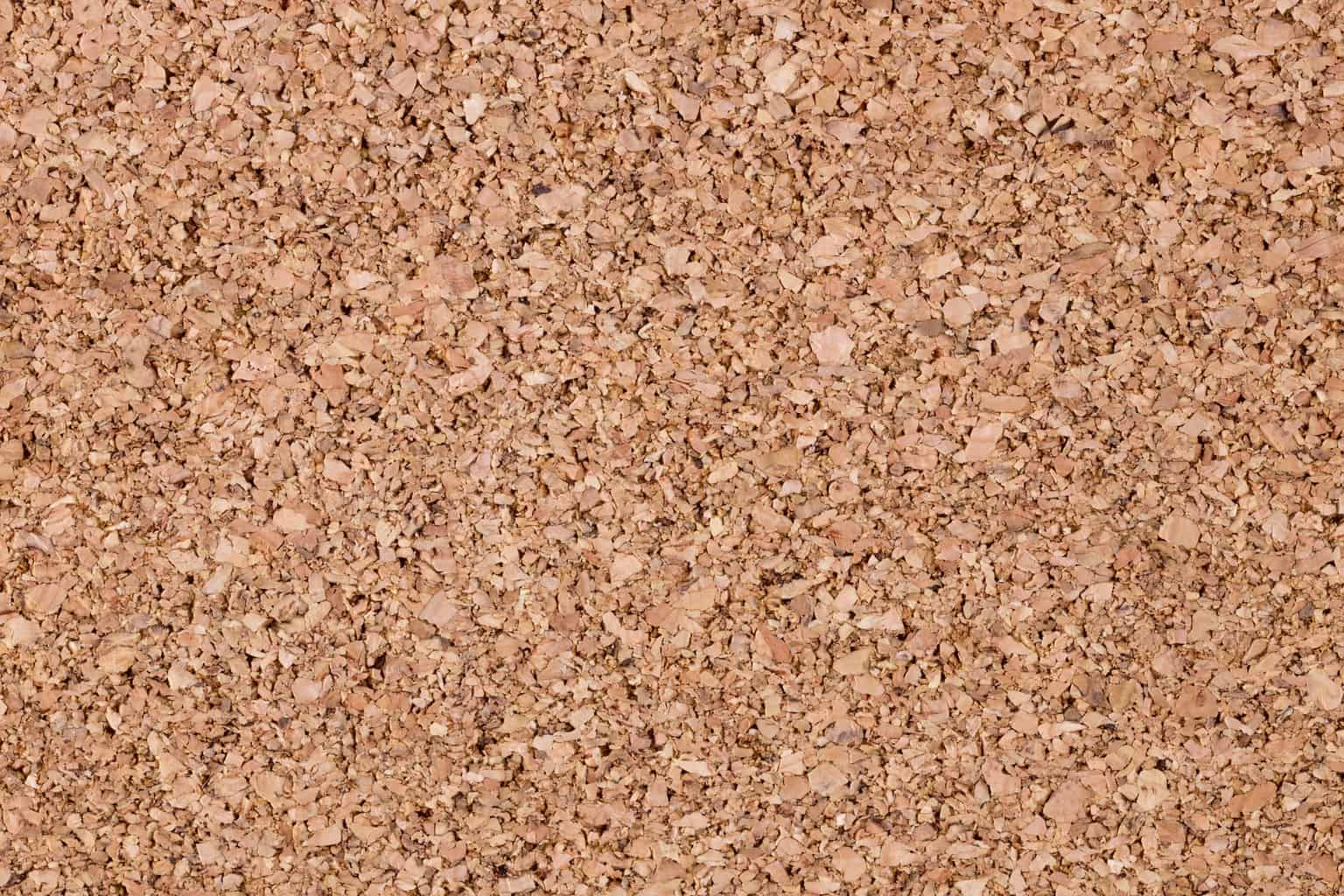
Prior To Installation, Gather The Following Tools
- Straightedge and clamps
- A saw suitable to cut the cork flooring: a jigsaw, handsaw, table saw or circular saw can work.
- Rubber hammer or rubber mallet
- Crowbar
- Miter box ad drill/driver to cut and install shoe molding
- 1/2″ wooden spacers
The floating floor design of cork flooring panels, where the planks are not required to be glued or nailed onto a subfloor, has truly simplified the installation process.
It is recommended that you install a plywood subfloor and/or moisture barrier if the floors are being installed in a potentially damp area. Otherwise, the cork flooring can be laid directly on preexisting vinyl, linoleum, hardwood, or concrete floors. Cork flooring should never be installed directly on top of carpet, however.
Because cork flooring will expand and contract with changes in humidity, you must leave a ½” gap between the flooring and the wall or there will be damage to your floors as they expand.
Of course, you are not going to want to leave this gap exposed, as that would be extremely unsightly, so you will need to cover the gaps with baseboard or shoe molding. If there is already existing shoe molding in the room where you are installing your cork flooring, it will need to be removed before installing the new floor.
If you would like to reuse the molding, take care not to crack it when removing and it can be placed over the expansion gap after the cork floors have been laid.

Additionally, you will want to acclimatize your cork flooring to the room prior to installation. Most manufacturers recommend leaving your flooring unwrapped from any plastic covering for a minimum of 72 hours in the room where it will be installed to allow the planks to adjust to the atmosphere and humidity levels in the room.
The room should be at least 60 degrees while the floors are being acclimatized. The subfloor or preexisting flooring on which the cork flooring is to be installed should also be made clear of dust and debris of any sort.
Finally, after gathering the above tools, leaving your cork flooring to adjust to the room for at least 72 hours, removing any existing baseboards or shoe molding, and cleaning the area on which the cork flooring is to be laid, you are ready to begin. You will want to set aside approximately 3 hours per 100 square foot space you have to work with.
Cork Flooring Installation
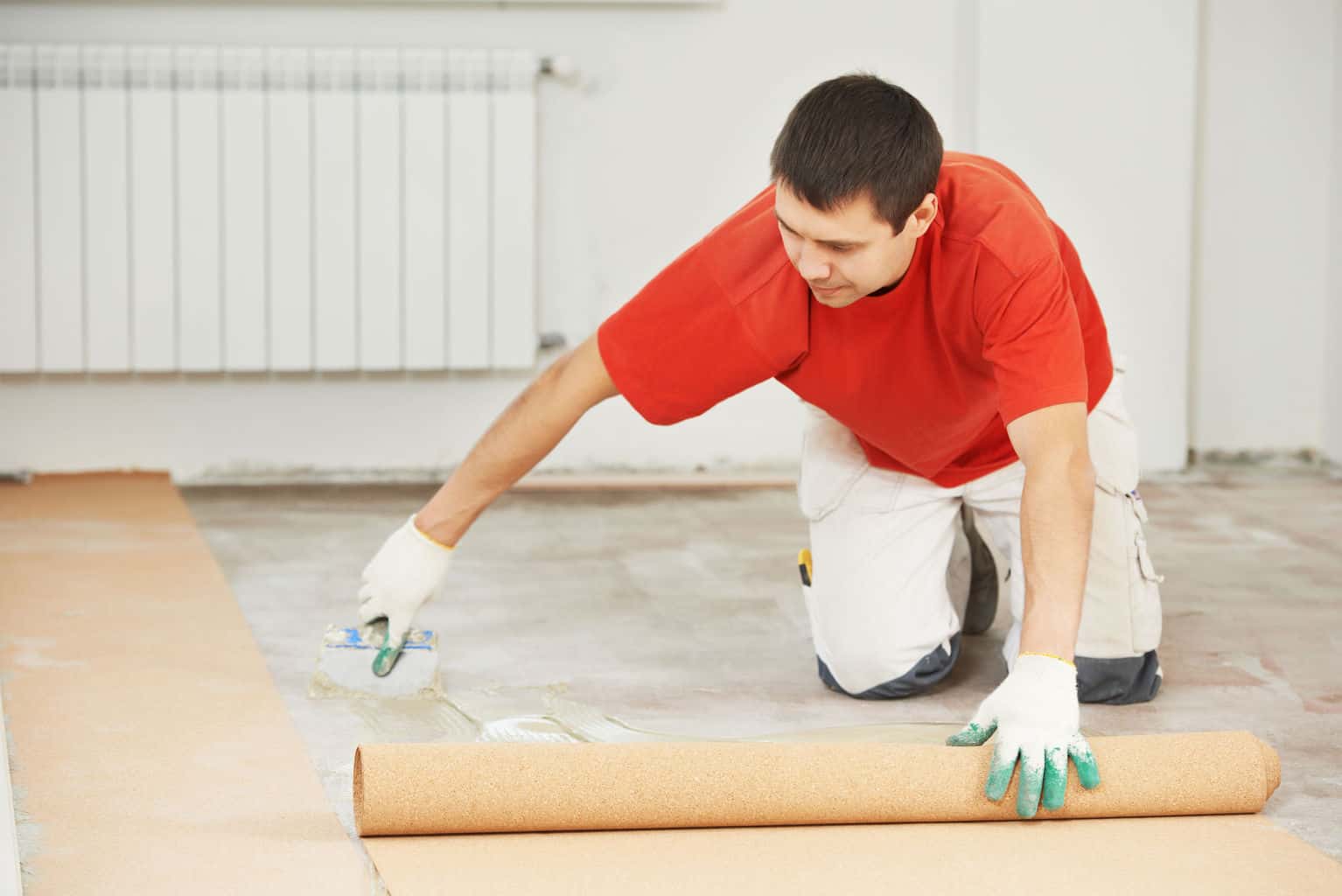
- If you are installing any kind of moisture barrier, such as a polyurethane sheeting, you will want to install that at this point. Run the sheeting up the wall about 2-3 inches, to help keep out moisture.
- Measure the length of the room and trim the cork flooring planks to fit; remember to leave the ½” space on either end for expansion.
- Begin the initial installation of the first row of cork flooring planks. To lay the cork flooring, push the planks together at an angle so the one end of the board slides into the corresponding groove on the subsequent plank until the boards click together. The pieces should be installed short end to short end and worked lengthwise like this (not long side to long side). You may need the force of your rubber mallet to join the boards, but do not hammer on the edges of the planks where the tongue and groove have been brought together; rather, hammer in the middle of the boards to prevent cracking.
- As you reach the end of the row, cut the last piece to length, using your saw guided by a clamped straightedge.
- As you lay the flooring, to save the ½ inch for expansion, place ½-inch wood spacers between the long end of the first row of cork floor planks and the wall. Line up this initial row of flooring boards tight against the spacers.
- Continue installation of the rest of the cork flooring boards, using the rubber mallet to ensure each row of planks are installed tightly against one another.
- As you install the final row, trim the planks to allow for the ½” expansion between the edge of the flooring and the wall.
Now that the flooring has been laid, most manufacturers recommend applying an additional polyurethane layer to protect the porous nature of the cork flooring from possible water damage.
Prior to applying the polyurethane, vacuum floors to remove any dust and dirt to ensure a complete and even application.
Let the finish dry for at least 24 hours before walking on the floor at all, and for the majority of the polyurethane finishes, a final hardness is achieved after 8 days, at which point you can install the shoe molding.
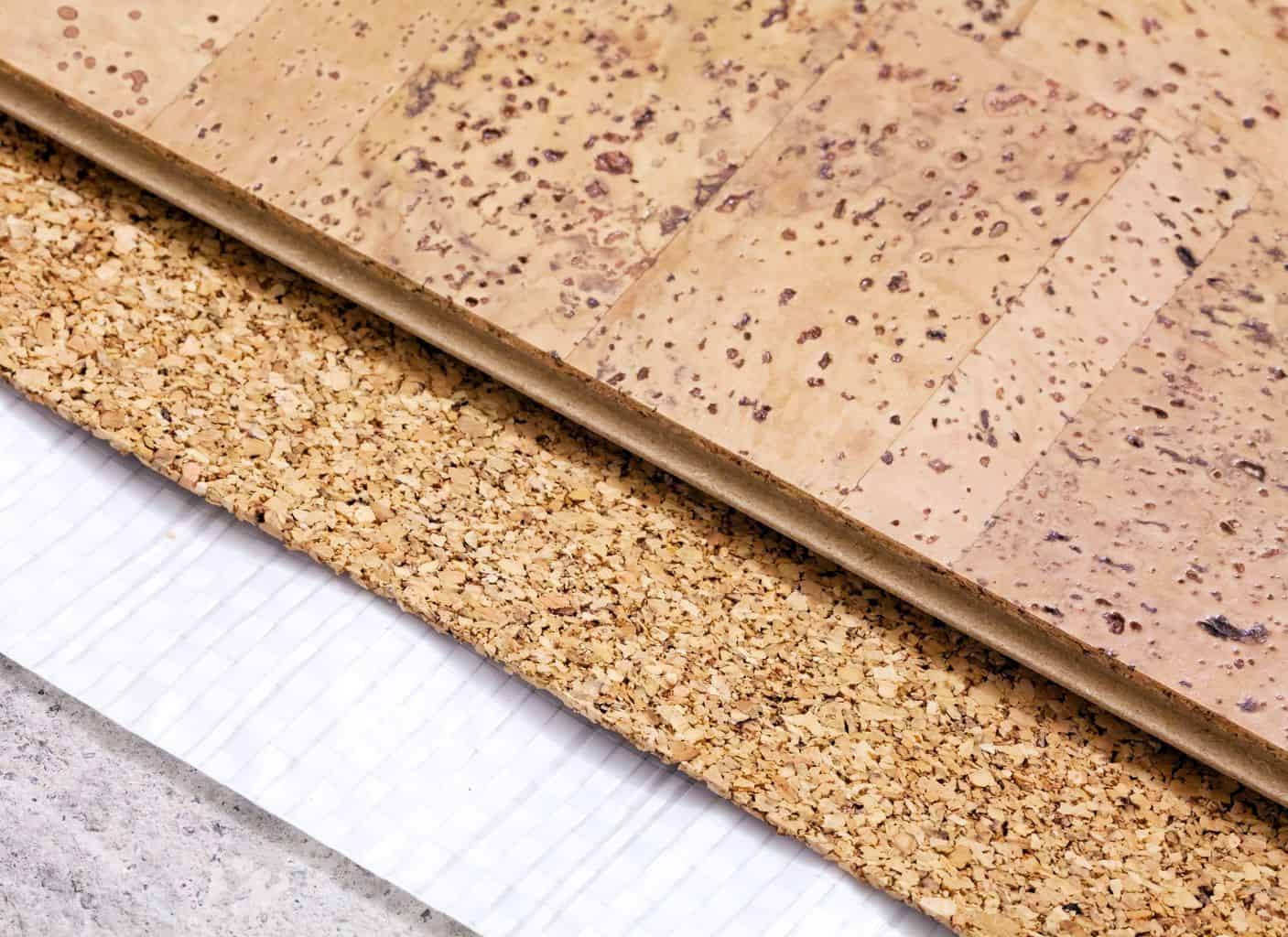
Measure the shoe molding and cut to length (if using a new molding and not re-installing preexisting shoe molding you removed prior to installation).
Join the molding at the corners of the room at a 45-degree angle and do not nail the molding directly to the cork flooring. Rather, nail the molding into the baseboard at 12-inch intervals.
At this point, you can rejoice! You have completed your cork flooring installation and your new floors are ready to be enjoyed.

Is it okay to use cork planks- click – on steps
Absolutely! Cork planks work very well on stairs. The bullnose for the steps can’t be cork, but the treads and risers can be.
The bullnose can be made of oak or whatever wood you use in your house for trim. You’ll want to caulk the edges of the cork panels where they meet the bullnose and where the tread and riser pieces meet.
Cork steps are beautiful.
A former cork retailer in Maine told me he stopped offering cork because of adhesion problems. He attributed the curling and lifting of the cork tiles to the extreme low temperatures of his region. He said that unless I have a climate control system in my house that maintains a constant humidity and temperature throughout the year, he can’t recommend cork.
I had problems with my floating cork floor but don’t know if it was because of a defective product or because of my dry climate. Natural Cork now says you have to have at least 50% humidity for cork to work right. My friend in Ohio has a cork glue-down floor and loves it.
Your connection may be right about cork as flooring, but it might be worth calling a few of the cork floor manufacturers and ask what their experiences are with temperature and humidity fluctuations and their product. I’d hate to think cork isn’t a good flooring material — it’s wonderful for m any reasons, including being sustainable.
The main reason I think your connection is off-base is because cork floors have been used around the country for over 100 years. I suspect buildings 100 years ago had fluctuating temperatures and humidity, and the floors have lasted well. But they were glue-down tiles, not floating tiles. Maybe that’s part of the difference between what works and what doesn’t.
Let us know what you find out.
We are also looking at installing a cork floor in our basement, and want to have a curve in the transition from cork to the carpeted area. The salesman said its not going to work, but we really want this. A straight line really won’t work with our layout. Any suggestions?
Thanks!
Karen
Are you using glue-down or floating cork tiles? That will somewhat impact the feasibility of your plan.
I believe “where there is a will, there is a way” applies here. It is indeed a challenge to have a curved line because the junction piece that is used to keep the cork and/or carpet from pulling up is straight, not curved.
One idea I have is, if you are using glue-down tiles rather than floating tiles, to lay the tiles so they will be under the curved edge of the carpet and then glue the carpet to the cork tiles. You still might have lifting challenges, but you can fix that as it happens. I’m sure I’ve seen curved carpet meeting hard surfaces before.
I don’t know if it will be as easy to do the curve if you are using floating cork tiles, but a little creativity could make it work.
Let us know what you do, please.
Finally found my answer for: Can I use cork on stairs. I can not wait to get started. One question though – Do I just use the cork glue to adhere risers and treads?
I used glue on my risers and treads, and nailed the bullnose. It worked fine. The only problem we had was the gaps between the stairs ad the baseboard that was installed first. Caulk took care of most of the gapping.
You didn’t say if you were using cork tiles or engineered tiles. Check into applying a urethane finish to whatever you get to give it more durable finish coat.
My biggest pointer, though, is to make sure the cork has thoroughly acclimated to your climate. Take it out of its packaging and separate each piece so it can dry and shrink to its fullest amount before installation. It could take several weeks, not just days if you live in a drier climate.
Good luck and have fun. It’s a great flooring product.
Thanks for the info. I am using cork planks by Lisbon. What kind of wood did you use for your bullnose? I came across a web site that sells cork bullnose. Did the nails crack the cork at all?
We used alder for our bullnose; our builder made it for us.
Given what I have experienced with cork, I’m not sure it’s the best product for a bullnose — and I couldn’t find any when we installed ours four years ago; if you applied several coats of a good polyurethane after installation, and kept it up, the cork might be good. But bullnose gets a lot of abuse and needs a really sturdy surface to survive. Alder is pretty hard and was scuffed when we refloored a year and a half into its life (not the fault of the the bullnose, just the particular cork product and manufacturer we used).
The cork did not crack where we nailed it. In fact, that cork held up better than other places. We bought a cork that had a manufacturing defect that caused it to bow and not click properly, giving us gaps between many of the engineered tiles.
We did see there were oak bullnose pieces available when we bought four years ago. If oak is part of your decor it would work well too. Our alder and cork were beautiful together. I miss it.
Can you recommend a paint for cork flooring? We have some cork flooring in the basement of our house, and it looks awful at the moment – dirty and old. We’d like to revitalise it. Do you have any suggestions?
First, have you thought about cleaning it up? Buffing it with a soft cloth and then putting a new sealant on when it’s beautiful again. A fresh cork floor looks great.
But, if you are set on painting over it, first make sure it is clean or the paint won’t stick. I don’t have experience painting cork, but my thought is that if you use a low VOC paint (for your health, not for the cork) and then put several coats of Diamond Coat Varathane Urethane, formulated for floors, you will be fine.
We are pulling up original 1950’s cork from 3 rooms, and installing new cork. I want to use the best quality cork available. I am also going to install cork in our kitchen. Can you recommend the best quality brand of cork that will last the longest? Thanks so much!!!
I have some 1950’s either 8×8 or 6×6 cork tiles in a bedroom. They are not the correct color, but was thinking of painting them. I read on another website that you should use water-based concrete paint. Any ideas as to why? Or, can you use another kind of paint?
I forgot to ask. Did you use flush bull nose or the overlap type for your bullnose on your cork stairs?
Actually my builder created the bullnose for us out of the wood we used for all of our woodwork. It was exquisite. If I were to do it again I’d use what I think you are referring to as the “ovelap” bullnose and what I call the round-nose bullnose. I personally like that look tremendously. Too bad cork doesn’t make for a good bullnose because I think that would be the creme de la creme.
So, are you getting really close now to installing your cork flooring?
Getting ready to put it down next week. Have the stairs all sanded, etc. I already finished my living room. I just love cork. I am really excited to see how the stairs will look! I am hesitant to use the round nose bull nose – is it easy to trip over.
I have two landings on my stairs and I can not wait to see the cork there with the glow that it has.
I think you’ll love your cork too. When I had cork I had a bullnose edge and didn’t have any problem with tripping over it.
What kind of cork are you laying — the floating tiles or the thin tiles? Seriously consider applying a water-based polyurethane (or whatever product will adhere to the finish your flooring has) to keep it strong and beautiful.
I’m using the thin glue down planks. I know to use the poly –
I’ll let you know how it turns out.(fingers crossed)
Great information on this page.
I’m thinking of laying cork on top of my painted hardwood. The paint is very adhered and I am guessing that stripping it would be a very long process which may not be worth it. From your comments, I understand that the glue down tiles will not adhere on top of the painted wood, so maybe my better choice would be to go for the floating floor type. Do you think my thoughts are on the right track? Thanks